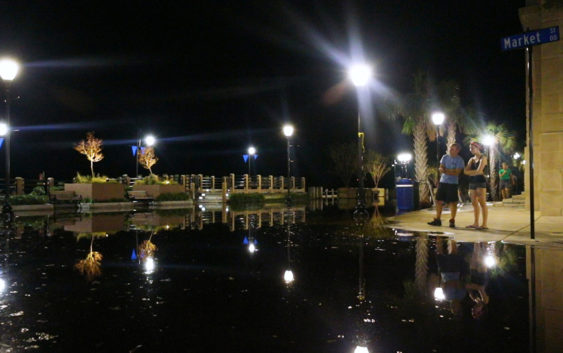- Texas flooding: Emergency crews rescue stranded residents
- “We lost everything”: East Texas residents confront their future after flooding
- Conroe police officer critically injured in Trinity County tornado dies
- Flood risk and severe weather threat for Central Texas over the weekend
- ‘Hasn’t been this bad since Harvey': Woodloch residents in Montgomery County brace for more flooding
At The N&O, we will remember Florence long into the future

To Our Readers:
In this Sunday’s paper, we will have a special section that captures the difficult, the emotional, the heroic, and the early aftermath of Hurricane Florence. While we will have important coverage for weeks and likely months to come as the affected areas and our entire region work themselves back to normal, we wanted our readers to have something that pulled together the highlights of our coverage that you could keep.
We will remember Florence long into the future.
I am proud of the section and all the work that went into it. And I’m grateful for the support of our business partners who also make it possible for us to support the American Red Cross with a donation from the proceeds.
I am even more proud of the depth and breadth of coverage we provided our community in nearly real time as this monster storm roared onto our beaches and then throughout the Carolinas.
By mid-Friday morning of the first week we had posted more than 500 stories online that told our audiences what was happening. We provided useful information about how to prepare for the impact and on critical issues like finding gasoline and water. Our news teams across the state captured the quickly evolving events with powerful photographs and videos, and kept everyone up-to-date with hour-by-hour coverage all day and all night.
There was another reality. By mid-Friday morning we had to turn on the generators at our production facility in Garner where we print our papers because the electricity was flickering on and off. It mirrored what was happening through the region.
The difficult time we had delivering papers was getting worse. High winds exceeded what state law allowed for our trucks to operate. Flash flooding made other areas impossible to serve. That stayed true until earlier this week when I-40 and I-95 were finally reopened. Nonetheless, hundreds of other roads remain closed. For much of this time there was no way to get papers to many of our subscribers. We also had to worry about the carriers and keep them out of harm’s way.
Often we had to print papers earlier than normal and earlier than we wanted. But there was no other way.
That situation was no different from what we and other newspapers experienced in every big hurricane that rolled through the Carolinas over the years.
What is different is that those issues no longer kept us from giving our readers the news and important information — thanks to our digital products.
We have now published more than 700 stories online that have been accessed over 13 million times. We’ve told you incredible stories of how Hurricane Florence uprooted residents, including one bedraggled kitten that found an interested audience around the world. We’ve shared stories about everyday heroes, about the massive fish kill left behind on highways as the flood waters receded, about school days missed and the initial accounting of the damage caused.
Three weeks ago I wrote a column about our moves to meet the needs of our audiences and business partners in this digital age using all the tools available to us. As I said then, I love newspapers, but print has always had its limitations. Hurricane Florence showed again the power of providing real-time news and information while still being able to use the daily paper for what it does best, including the special section.
I hope you enjoy it and our continuing coverage of this storm’s impact.
Sara Glines is president and publisher of The News & Observer and the Herald-Sun.